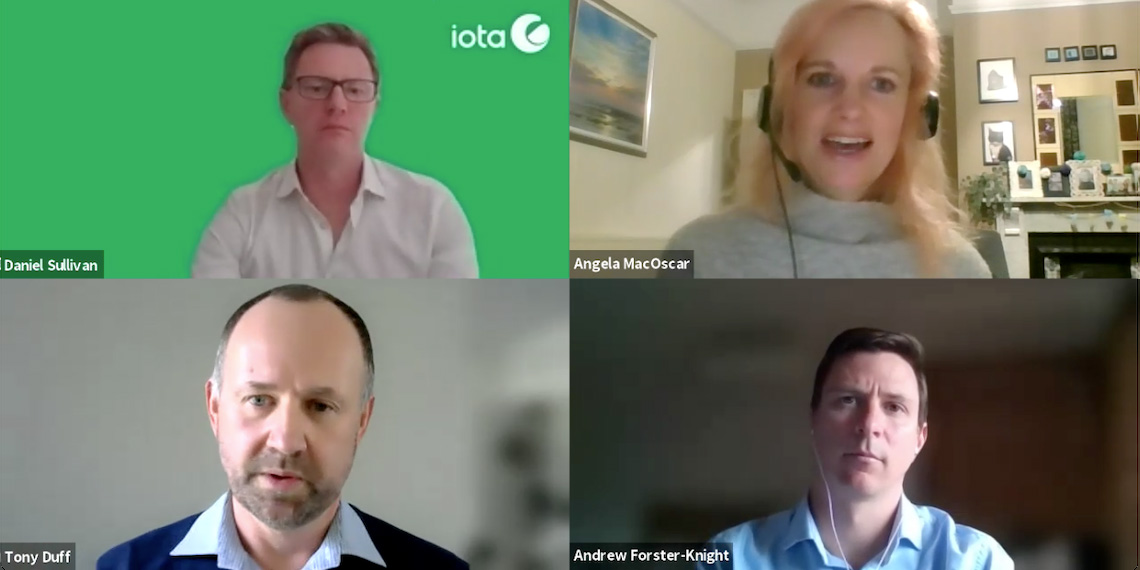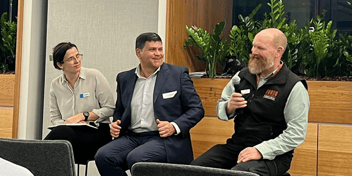Making digital transformation work in reality

Benefits to customers, assets and the environment are just some of the promises of digitisation, but unlocking the true value of digital in the water sector requires whole-of-business transformation that moves past the traditional approach of siloed pilots and applications.
In a recent webinar hosted by Iota, experts offered their insights into digital transformation in the water sector, showing how realising the true value of digital transformation requires a significant shift across the whole business not only in terms of processes, but also culture.
Iota CEO Daniel Sullivan said the term "digital transformation" was running the risk of becoming overused in the water sector, but there’s still more to do before the sector can reap all the benefits of widescale digital transformation.
“There are dreams of fully automated water utilities where algorithms do everything for us, and we can invent new ways to deliver water. But right now we’re at risk of being stuck in small digital metering pilots, with little chance of scaling,” he said.
“It takes a lot of push to build momentum and to maintain momentum around digital transformation. And it’s really important that the water sector shares its learning and collaborates together on this journey.
“We can help each other avoid pitfalls, build a persuasive investment case and reinforce the need to go digital as a sector.”
Saying goodbye to segregation
South East Water General Manager, Digital Utility Andrew Forster-Knight said one of the most important aspects of taking the digital journey is to accept and embrace the fact that effective transformation touches every aspect of the business.
“At South East Water, digital transformation means not doing technology projects in isolation. It’s about having an end-to-end approach to deliver on our business strategies. For us, it’s about driving the change across the whole enterprise,” he said.
“Some of our major initiatives touch the whole business, every team, all of our systems, integration and automation. The end goal is customer value, better customer experience, business efficiency and sustainable delivery.
“For us, there is only so much we can implement before change fatigue sets in. But we have found a sweet spot by implementing transition steps, while we balance cost with resource and the internal appetite for change, rather than attempting a full transformation all at once.”
Northumbrian Water (UK) Head of Innovation Dr Angela MacOscar said that utility's digital journey has been similar to South East Water, in that it created a specific digital focus group as a means of enabling the business to change while staying operational.
“At Northumbrian Water, we have had a really big shift in changing our processes to an end-to-end system,” she said.
“We carved out a new group with representatives from right across the business, who were setting up our new digital process in the background while the majority of the staff were continuing the job of getting the work done.
“It's been a huge program, but we are seeing gigantic improvements by being able to track customer calls right through to the completed job and everything in between, enabling a seamless service, but also creating a much easier process for our employees.”
Both of these water utility examples showcase an approach to change that enables the transformation to occur right across the enterprise, which requires a shift in thinking and processes, Iota Consultant Tony Duff said.
“It’s about adoption, not adaptation. We are adopting a new process that’s underpinned by a new technology, not trying to adapt the technology into the old process. I think this shift in thinking is key to success,” he said.
“Some of the lessons learned from bigger transformation programs is that it’s multi-dimensional. You’ll have an implementation of technology, but that technology is underpinning process change. New technology delivers changes in our processes.
“If you're making changes in one facet of the business, you need to ensure the hearts and minds of your people change too.”
Data state of mind
While digitisation has the potential to help water utilities tackle many challenges moving forward, it’s important to recognise that the effective use of data is at the heart of this new era of analytics and learning, MacOscar said.
“We have some very tough challenges, such as climate change, ageing asset base and increased demand on our products and services,” she said.
“More than ever, we need insights to help us really improve our products and services, the experience we give to our employees, to help us protect the environment and also to really help and support the communities we serve.
“But digitisation is starting to move past new technology and fancy bits of kit, and is starting to become more about data and how we create insights in order for us to make the most of the opportunity.”
Duff said a similar thing happened in the energy sector, which showcased how — in the digital transformation landscape — data becomes one of the most valuable assets in a resource service provider’s arsenal.
“The energy industry is probably a bit further advanced than the water sector in terms of the roll out of smart metering. We saw a richness of data coming through on how our customers behave, in terms of their usage habits,” he said.
“We understood our customers better and were then able to offer better products to our customers. Those insights from data become a valuable asset.”
Great expectations
One of the reasons data is so valuable is that it enables utilities to start offering more customised experiences, and allows for savings, too.
Forster-Knight said embarking on a digital transformation has become a necessity in terms of meeting the expectations of customers.
“The disruption definitely is on the internal side for us. Our customers expect digital offerings because they get them through other services,” he said.
MacOscar agrees, saying that the digitalisation that has occurred in other sectors has set a precedent for service.
“Expectations are increasing due to digital markers set by banking, energy, and other sectors ahead of water. This is what people are benchmarking their experience against. We are having to adapt to meet these higher expectations,” she said.
“We are having to mirror the level of service provided in other sectors, and we are having to move a lot faster than before. We are not agile digital start ups; we have a lot of legacy that we have to get up to date.”
Despite this challenge, MacOscar said it’s absolutely crucial not to take an eye off employees, too. If the aim of digital transformation is to make sure it works across the entire company, then ensuring staff are supported is also key.
“At the heart of this is human-centred design. Without people, whether it be employees or customers really embracing what you are doing, then you can leave people behind,” she said.
“For the customer, it has to be super easy, and they have to see a benefit for why they should jump on board. For the employees, if you are digitally minded it can be positive, but if there are gaps in digital literacy then it can be a very scary thing.
“You need to give people the skills and tools to be able to work with what you are providing.”
Interested in hearing more about digital transformation in the water sector and the key facets of a digital utility? Take a look at the Iota webinar here.

